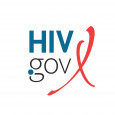[Edit by AI, reviewed by Humans.]
When HIV.gov started working on this blog about using generative artificial intelligence (AI), some team members sent AI-generated edits while others sent traditional edits. The AI-generated edits to the blog created a smooth and easy-to-read document, and a colleague commented, “Great, you’re done, post the blog.”
However, we did what we always do—staff carefully re-read and revised the blog to ensure accuracy and that we were on message. Our message is both to encourage our colleagues to assess if generative AI can extend their reach and to use these tools cautiously and transparently.
Background
HIV.gov’s mission is to provide accurate and timely information on HIV and federal resources and policies. For 17 years, we have been committed to assessing emerging and new tools to disseminate information if doing so helps our outreach and makes our content more accessible to support efforts to end the HIV epidemic.
Generative AI
With the increasing availability of generative AI tools, we explored their usefulness, and we shared with our team how we define these tools as technologies that can generate new text-based and visual content, not merely replicating existing data but creating unique material by learning and applying patterns.
However, merely describing generative AI is insufficient. We provided our team and colleagues with training on these tools, including a 3-day training lab and workshop at USCHA [the U.S Conference on HIV/AIDS, held September in Washington, DC] . With the release of the October White House Executive Order, “Safe, Secure, and Trustworthy Development and Use of Artificial Intelligence,” our training now highlights this executive order (EO) to reinforce the importance of careful planning and understanding risks. The EO aims to “advance agencies’ efforts on AI across the federal government, building on previous actions to harness the benefits and mitigate the risks of AI,” according to AI.gov.
Planning: At the start of HIV.gov’s planning process regarding the use of generative AI, we asked ourselves, "What is generative AI? Can generative AI tools broaden our reach and save time/resources? How can we use it appropriately? What do our users think of generative AI?" The insights gained from these inquiries showed us that it’s essential to use generative AI with transparency in creating blog posts, social media updates, and video materials.
Transparency: We clearly identify AI-generated content using methods like watermarks, hashtags, or disclaimers like “Developed by AI, reviewed by Humans.” We also remind our users that each piece of AI-generated content undergoes careful quality assurance by our team to ensure accuracy and relevance.
Workflow Impact: By leveraging generative AI, we’ve condensed the time to create summary videos of our weekly blog posts from an estimated five hours to just over two hours.
Staffing/Adoption of Generative AI: While embracing the benefits of generative AI, we’ve encountered challenges such as over-reliance and legitimate apprehension about AI replacing human creativity. To address these, we discuss and emphasize key issues such as the importance of planning, understanding terms of service, and maintaining transparency.
Our Ongoing Commitment
We are committed to sharing information, our experiences, and learnings; although, we realize it can be challenging to stay up to date. We encourage our colleagues to stay abreast of AI advancements and policy changes, ensuring our practices align with the latest guidelines. We also encourage individuals to learn more about the HHS Office of the Chief Artificial Intelligence Officer (OCAIO).
Join Our AI Conversation
We’ve shared our AI insights through meetings, workshops, and mentorship labs. Next, we’ll host a generative AI lab at the National Latinx Conference on HIV/HCV/SUD in May. We ask you to share your experiences using generative AI by reaching out to us at contact@hiv.gov.
This blog post was published December 14, 2023, on HIV.gov.








Comments
Comments